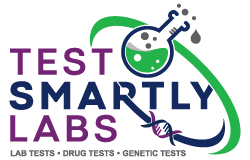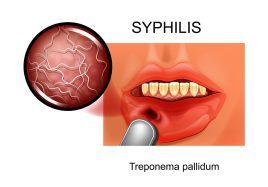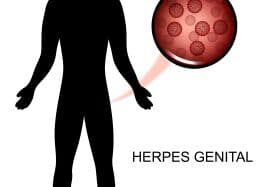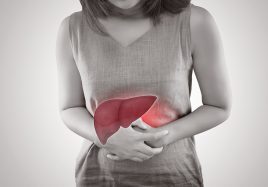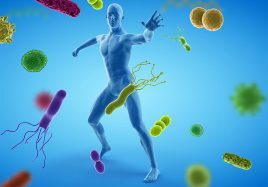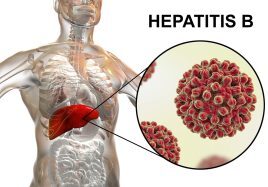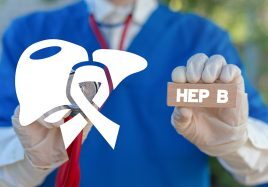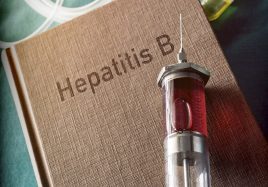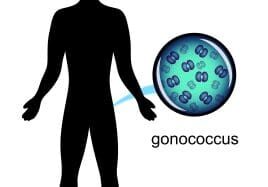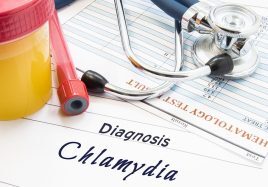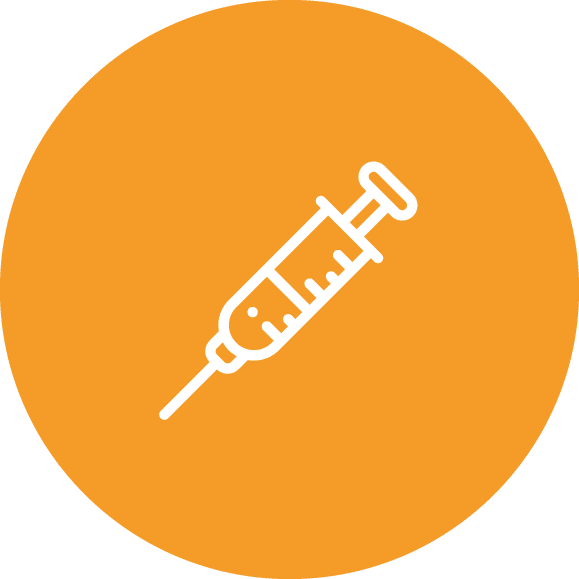
STD & STI Testing
Sexually transmitted diseases (STDs) and infections (STIs) can be contracted from vaginal, anal and oral sex. If you are sexually active, consider getting an STD or STI screening at least once a year. Those with higher risk factors for STDs, such as multiple partners, anonymous partners and unprotected sex, should get tested more often.
Test Smartly Labs offers a safe, private setting for full-spectrum STD and STI testing.
The Difference Between STIs and STDs
A sexually transmitted infection indicates the beginning stages of a virus. STIs may not result in any symptoms or immediate health risks, but the person with the infection carries it and can pass it on. STIs can typically be treated if found early.
A sexually transmitted disease is an STI that has manifested in the body. In other words, an STD starts as an STI. From here, the condition can alter the body's normal functioning and lead to health concerns.
How Test Smartly Labs Can Help
Test Smartly Labs can test for nearly every STI or STD. Our comprehensive STI/STD panel testing service is popular among our clients. This panel checks for the most common STIs and STDs, including the following:
- Chlamydia
- Gonorrhea
- Hepatitis B
- Hepatitis C
- Herpes simplex virus
- Syphilis
- HIV
- Herpes 2

Recent Exposure and Dormant STD Testing Services
If you are concerned about the possible exposure to an STD or STI, we offer lab testing. Types of available STD testing include:
- Basic STI panel: The basic panel requires a urine sample to test for chlamydia and gonorrhea.
- Comprehensive STI/STD panel: As previously mentioned, this panel is a full urine and blood test for syphilis, hepatitis B and C, HIV, herpes, chlamydia and gonorrhea.
- Advanced plus panel: A urine and blood test sample is needed for syphilis, HIV-1, hepatitis C, herpes, chlamydia, gonorrhea and hepatitis panel-acute.
When to Pursue Sexually Transmitted Disease Testing
STI and STD testing is key to overall sexual health. STI and STD panels can be beneficial for anyone who is:
- Entering a new relationship.
- Sexually active outside of a relationship.
- Showing symptoms of an STD.
- Wanting to get pregnant but concerned about passing conditions on to the baby.
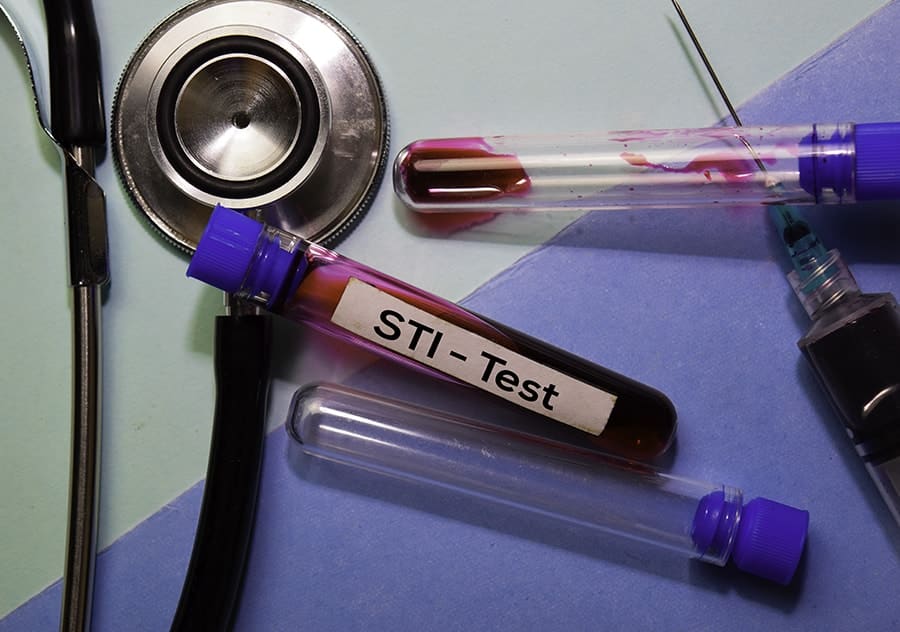
Confidential STD and STI Testing at Test Smartly Labs
At Test Smartly Labs, our clients' health is our top priority. Our team is passionate about privacy, confidentiality and keeping testing simple for anyone who needs it. Don't put it off any longer — contact us for anonymous STD and STI testing services today!
Information On This Topic
Understanding STI vs STD
STI stands for “Sexually Transmitted Infection” and STD stands for “Sexually Transmitted Disease”. These two terms sound similar and the difference between them can be confusing. One of the reasons for this is that up to a certain point these two terms were synonymous and were used interchangeably. But now there is a technical difference between these terms which has been acknowledged by the medical community and can no longer be used synonymously.
Privacy Matters for STI/STD Testing at Test Smartly Labs
While all health-related matters deserve the utmost privacy and confidentiality, some types of blood tests and lab work need even more. When it comes to STI or STD testing, you do not want to have any small chance of anyone you know finding out about your risks or diagnoses. Of course, if you go to your doctor’s office or even a public clinic, the HIPAA rules require everyone involved to keep your information private and secure. However, you may still have some doubts troubling your mind.
The Silent Epidemic
STD/STI statistics and need-to-know information to live a healthy life
It is one of the most difficult and uncomfortable topics for most people to discuss – and it is literally ruining millions of lives every day.
Why STD Screening Matters - STD Statistics:
- According to the Centers for Disease Control (CDC), nearly 20 million new STDs occur every year in the United States - half of which are among people aged 15-24 - despite this, only about 12% of young people were tested in recent years
- The CDC estimates that undiagnosed STIs cause 24,000 women to become infertile each year
- Data from 2013-2014 showed that about 42% of men and 40% of women aged 18-59 had genital HPV at that time
- About 1 in 8 people aged 14-49 in the United States has genital herpes
- From 2016-2017 the CDC reported an increase in gonorrhea cases of 75.2% since the historic low of 2009.
- In 2015, approximately 1.5 million cases of chlamydia were reported - the highest number of annual cases of any condition ever reported to the CDC
- In the US there were 39,782 new HIV diagnoses in 2016 and of the estimated 1.1 million people in the US living with HIV, about 15% don’t know they’re infected - so get tested today
Most STDs Are Curable - Get STD Testing So You Can Get Better
A lot of young people are negatively impacted by STD stigma that paints STDs as “dirty,” life-altering afflictions which can lead people to fear to test as they think their life will be different forever if they learn they do in fact have a sexually transmitted disease.
This is not remotely true. Most STDs can in fact be cured with a round of antibiotics and others can be managed with medications. Because of how easily cured most of the STDs are, many organizations have taken to referring to them as sexually transmitted infections (STIs) rather than STDs, since the word “disease” does not accurately represent what these infections are. STD and STI tend to be used interchangeably; we continue to refer to them as STDs for consistency’s sake.
STD/STI Statistics and Need-To-Know Information to Live a Healthy Life
It is one of the most difficult and uncomfortable topics for most people to discuss – and it is literally ruining millions of lives every day.
According to the Centers for Disease Control and Prevention, an estimated 110 million Americans are living with sexually transmitted diseases and infections. For the fifth straight year, STD/STIs have hit a record high – meaning that today, at this very moment, there has never been a higher risk of you or someone you love contracting a sexually transmitted disease or infection. Yet, unlike several other epidemics or outbreaks such as opioids or coronavirus, most Americans have no idea of the tremendous impact that sexually transmitted diseases and infections are having on our health, our medical systems, and our average lifespan. Understanding the epidemic, the individuals at risk, and the ways to protect yourself and your loved ones are critical in combating this silent killer.
Read more below...
Be prepared for your lab test!
- Make sure you have been Fasting for at least 10-12 hours for many blood tests
- Make sure you are Hydrated for blood draw
- Complete TSL Intake Form & HIPAA Disclosure
- Pay for your lab test upfront (We don't process insurance claims but can provide you with information to submit your own insurance claim)
- If you are having specialized testing, call ahead to help us determine if there are special collection preparations.
- If you are interested in one of our health panels, please feel free to look at our web listing to help identify which one you want performed.
- Please try to arrive 30 minutes prior to business closing to allow us time to process your samples for shipment.
What Are Your Hours?
- All Test Smartly Labs are open Monday through Friday, from 9am - 5pm
Do We Need To Have An Appointment?
- No appointment is required to come into our labs, and all of our locations are on a walk-in basis. However, it is recommended you arrive at least 30 minutes prior to closing. If your situation requires special time considerations, please call us to determine if it would be better to arrange an appointment time.
Do I Need Doctors’ Orders For Testing?
- No doctors’ orders needed, we are a Direct-Access Testing Center. You are encouraged to consult your medical professional with your lab test results.
What’s The Turnaround Time For Lab Work?
- Average turnaround time is 2-5 business days depending on the complexity of the lab work. Most tests are available in 2-3 days.
Do You Need A List Of My Medications For A Drug Test?
- Per protocol, the lab techs are not allowed to receive or ask for your medications. A medical review officer or MRO, a licensed physician who specializes in toxicology, will call you and ask for your medications and your physician’s phone number if it’s detected in your sample during testing. The MRO will then call your physician to verify your medications.
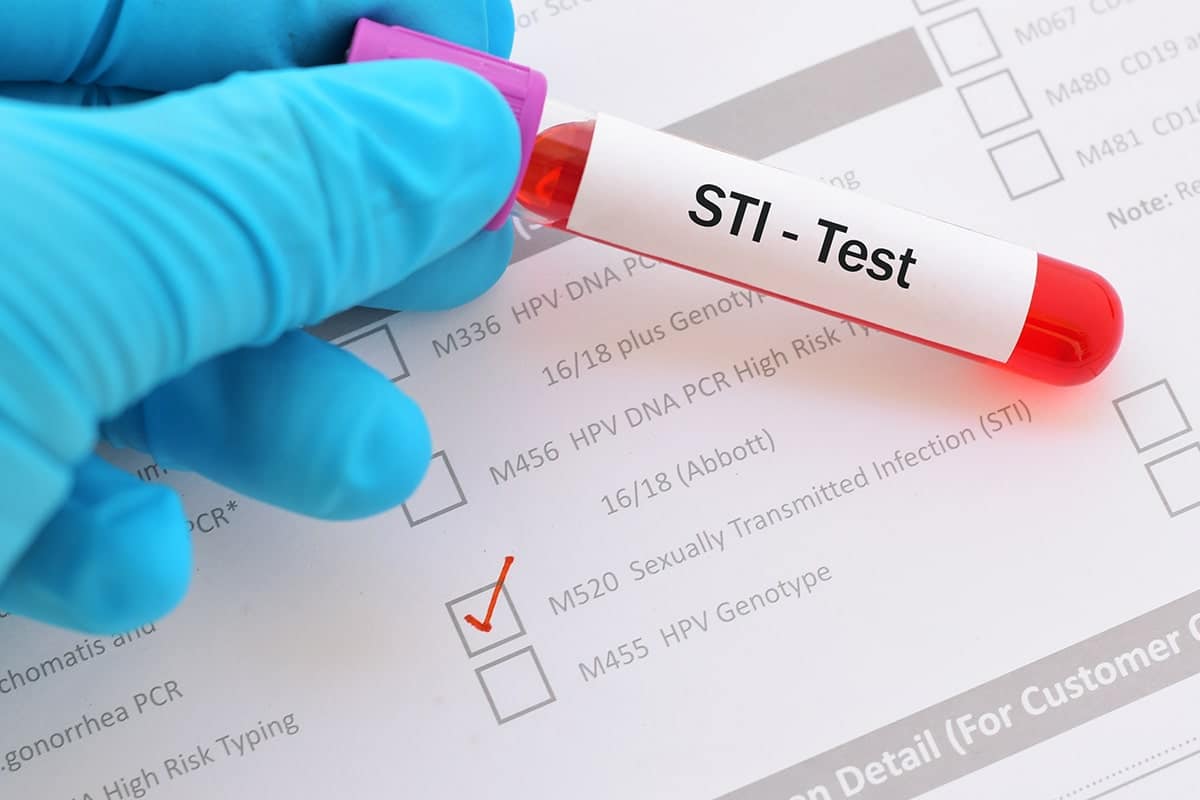
STI / STD Testing
At Test Smartly Labs, we understand the sensitive nature of sexually transmitted infection and disease testing, and we work hard to provide the most comfortable experience possible. The high occurrence of sexually transmitted diseases means that anyone who is sexually active in any capacity needs to be tested. Most STDs can be cured with a round of antibiotics, and others can be managed with medications. Test Smartly Labs offers confidential STI / STD testing options in a clean and private setting. We test for nearly every STI / STD such as Chlamydia, Gonorrhea, Hepatitis B, Hepatitis C, Herpes Simplex, Syphilis, HIV, etc. However, the most common STI / STD Testing options chosen by our clients are the Comprehensive STI/STD Panels where you have a much better chance of getting the information you need. It’s nearly impossible to pinpoint the exact STI or STD that you think may have contracted, so it’s wise to opt for a test panel that checks for the most common STIs and STDs.
Common STI & STD Infections/Conditions
Chlamydia
Chlamydia is the most frequently reported infectious disease in the U.S. and occurs most commonly in women aged 24 or younger, but men can also be infected. Most people with chlamydia are asymptomatic, and so the CDC recommends that if a person is sexually active, they be screened each year.
• Test Smartly Labs uses a urine test to screen for chlamydia.
Gonorrhea
The second most commonly reported STD in the U.S., gonorrhea, can occur in both men and women. The CDC recommends the following people be routinely screened each year: all sexually active women younger than 25 years; older women with risk factors; all sexually active gay, bisexual, and men who have sex with men.
• Test Smartly Labs uses a urine test to screen for gonorrhea.
Hepatitis B
The hepatitis B virus is an STD that causes liver disease. It is very contagious and is most often sexually transmitted or spread through making contact with blood that carries the virus. The CDC recommends the following people be routinely screened each year: pregnant women, men, and women with increased risk factors, persons with HIV.
• Test Smartly Labs uses a blood test to screen for hepatitis B.
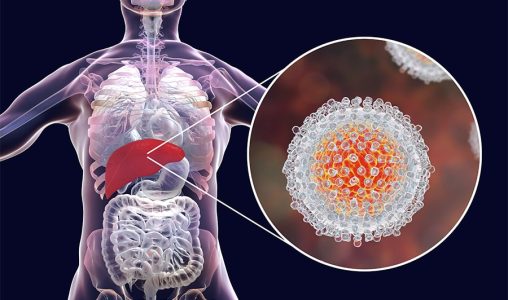
Hepatitis C
The hepatitis C virus is the most common, chronic, blood-carried infection in the U.S. It can lead to liver disease and is the most lethal out of hepatitis A, B, and C. It is most often transferred through the shared use of drugs, especially needles and paraphernalia. The risk goes up if people have used cocaine or other non-IV drugs during sex. People with HIV, and those who engage in group sex, are also at risk.
• Test Smartly Labs uses a blood test to screen for hepatitis C.
Herpes Simplex Virus Testing
The herpes simplex virus type 1 refers to oral herpes, which often shows up as cold sores around the mouth and contracts through exchanging saliva through non-sexual contact. Herpes simplex virus type 2 refers to genital herpes and is considered an STD. This is spread by having any form of sex with someone else who has herpes.
• Test Smartly Labs uses a blood test to screen for herpes.
Syphilis
Syphilis is a serious STD that's currently on the rise, especially amongst men who sleep with other men. If left untreated, syphilis can cause serious health concerns. Sometimes the disease can not cause problems for 10-30 years. The CDC recommends the following people be routinely screened each year: pregnant women; at least once a year for all sexually active gay, bisexual, and other men who have sex with men; and more frequently than once a year for those with multiple or anonymous partners.
• Test Smartly Labs uses a blood test to screen for syphilis.
HIV
HIV continues to be a common STD among Americans, and routine screenings are highly recommended for anyone having sex. Knowing if you carry the HIV virus is essential for overall health, and it may also put you at risk for other STDs. The CDC recommends screenings for all adults from 13-64, all pregnant women, sexually active gay and bisexual men every 3-6 months, anyone who has unsafe sex or shares injection drug equipment.
• Test Smartly Labs uses a blood test to screen for HIV.
Sexual DNA and Drug Testing
Most often, sexual health is tied to STI/STD testing. There are prime occasions to get up-to-date on your sexual health testing: When you enter into a new relationship, you've been out of a relationship but want to check if you contracted any STDs, you're worried symptoms might be caused by an STD, or you want to get pregnant soon and make sure you don't pass anything on to the baby.
Paternity Testing
If you need a reliable paternity test, we can help. The test needs to be ordered by the alleged father or mother - or a child that’s over 18 years. Once a date is set, the test must be done at our offices (for legal purposes), or samples can be collected if the test is being done for personal reasons. The samples are then analyzed by AABB-accredited labs and processed twice to ensure accuracy. The confidential results will then be delivered to you or the caseworkers, depending on the circumstance. Tests are 99.99% accurate. Paternity testing is often accompanied by STI/STD testing due to the frequency of multiple partners and the uncertainty of the sexual partners that may be involved.
Understanding Tests for Drugs Used in Sexual Assault
After a sexual assault, it’s a good idea to get a comprehensive STI / STD Test to avoid future complications and/or receive treatment. By understanding the options and completing a full Comprehensive Unknown Substance Panel Test, the victim can identify what impaired them and take the next steps in protecting their overall health. There is an incredibly broad spectrum of potential drugs that can be used to assault an individual, and this is why the use of a broad-spectrum Comprehensive Unknown Substance Panel is essential. With this panel, a trained lab can narrow down or identify the drug used to impair the victim. These drug panels can be ordered from Test Smartly Labs and tested discretely either with or without visiting a hospital or medical center, and typically use blood, urine, or hair as the testable sample.
Consider STI/STD Testing When Pregnant
If you are sexually active and pregnant, you might want to consider taking a comprehensive STI/STD test. STIs and STDs are as common in pregnant women as they are in non-pregnant women. Doctors may not consider these tests unless you ask for them. STDs and STIs can create serious complications during pregnancy. You may not notice the effects at first, but they might appear in the later stages of pregnancy or seen at the time of labor. These infections and diseases are harmful and immediately need to be treated. If you are sexually active throughout your pregnancy, be on the safe side and get yourself checked before, during, and after pregnancy to ensure the best health for you and your unborn child.


Understanding The Difference Between STIs and STDs
STI stands for “Sexually Transmitted Infection” and STD stands for “Sexually Transmitted Disease”. These two terms sound similar and the difference between them can be confusing. One of the reasons for this is that up to a certain point these two terms were synonymous and were used interchangeably. But now there is a technical difference between these terms which has been acknowledged by the medical community and can no longer be used synonymously.
The difference lies in the meaning of the words being used. Although, both STD’s and STI’s are transmitted sexually or via sexual acts, the term “disease” and “infection” set them apart. Looking up at the meanings of these individual words, you come to the realization that they carry different connotative and denotative meanings.
Infection means being infected, contaminated i.e. the invasion of the body by bacteria, viruses or parasites. While diseases spread by infection but there is an implication that the infection has caused some disorder of structure or function in the body which may result in serious health complications.
In the case of STI’s, the virus/bacteria have come in contact with the person’s body, multiplied and then spread in the body. This may or may not result in any symptoms or have any immediate health risks. Regardless, the person carrying the infection is a “carrier” of the disease. That is why it is strongly advised to get tested even if there is no manifestation of symptoms in the body. Otherwise, the carrier can become a source of spreading STI’s or STD’s to other sexual partners. According to stats, up to 70% of women don’t experience symptoms when infected with chlamydia but they may still affect other potential partners. So, it’s best to get tested even if you’re asymptomatic.
An STI is classified as an STD when the infection caused by bacteria or virus leads to not only the manifestation of symptoms in the body but symptoms which result in altering the normal function of the body such that it causes complicated health risks. This implies that all STD’s start out as STI’s.
We can take an example of HPV (human papillomavirus) to clarify the difference between the two. An individual who has contracted HPV carries the virus, even if they do not show any symptoms. This is a typical case of the individual having an STI. But if this individual develops cervical cancer from HPV, now this is a case of an STI which has progressed to an STD. Gonorrhoea or Chlamydia infections which have progressed into pelvic inflammatory disease (PID) are also examples of infections which have transformed into STD’s.
Another reason for the change in the terminology is because there is a lower stigma attached to “Sexually Transmitted Infections” rather than “Sexually Transmitted Diseases”. A study was conducted regarding both terms and it was found that although people understood that both STI’s and STD’s had the same risks and mode of transmission, there was a significant difference in the stigma attached to the two. STI’s caused by bacterial infections can be easily cured using antibiotics and STI’s caused by viral infections can be managed using antiviral treatments but are difficult to permanently eradicate.
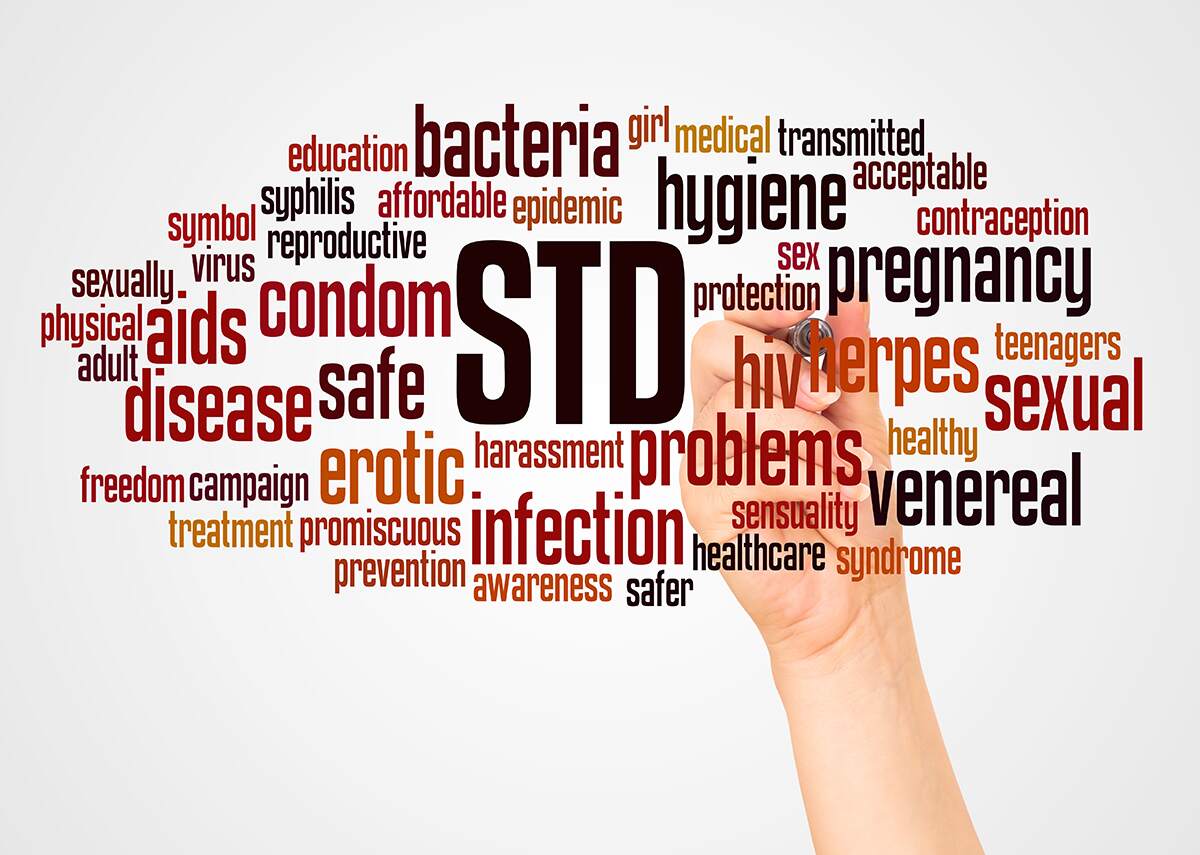
Our Popular Products
STD / STI Panel Comprehensive (Sexually Transmitted Diseases / Infections)
Price: $259 / Online Prepay Price: $239 Step 1: Choose a Testing Center location Step 2: Select desired appointment date & time Step 3: Choose "Online Prepay" to receive lowest price OR, select "Pay In-person" option for standard pricing Step 4: Complete the required fields and get tested
Syphilis Test for Treponema Pallidium Antibodies
Price: $225 / Online Prepay Price: $215 Step 1: Choose a Testing Center location Step 2: Select desired appointment date & time Step 3: Choose "Online Prepay" to receive lowest price OR, select "Pay In-person" option for standard pricing Step 4: Complete the required fields and get tested
Syphilis Standard Test RPR (Rapid Plasma Reagin)
Price: $49 / Online Prepay Price: $45 Step 1: Choose a Testing Center location Step 2: Select desired appointment date & time Step 3: Choose "Online Prepay" to receive lowest price OR, select "Pay In-person" option for standard pricing Step 4: Complete the required fields and get tested
Herpes Simplex Virus, HSV 1 & 2
Price: $169 / Online Prepay Price: $159 Step 1: Choose a Testing Center location Step 2: Select desired appointment date & time Step 3: Choose "Online Prepay" to receive lowest price OR, select "Pay In-person" option for standard pricing Step 4: Complete the required fields and get tested
Herpes Simplex Virus (HSV) Type 2-Specific Antibodies, IgG
Price: $159 / Online Prepay Price: $149 Step 1: Choose a Testing Center location Step 2: Select desired appointment date & time Step 3: Choose "Online Prepay" to receive lowest price OR, select "Pay In-person" option for standard pricing Step 4: Complete the required fields and get tested
Hepatitis C Virus (HCV) Antibody
Price: $59 / Online Prepay Price: $55 Step 1: Choose a Testing Center location Step 2: Select desired appointment date & time Step 3: Choose "Online Prepay" to receive lowest price OR, select "Pay In-person" option for standard pricing Step 4: Complete the required fields and get tested
Hepatitis B Quantitative (Titer)
Price: $55 / Online Prepay Price: $49 Step 1: Choose a Testing Center location Step 2: Select desired appointment date & time Step 3: Choose "Online Prepay" to receive lowest price OR, select "Pay In-person" option for standard pricing Step 4: Complete the required fields and get tested
Hepatitis B Surface Antigen – HBsAg Screen
Price: $59 / Online Prepay Price: $53 Step 1: Choose a Testing Center location Step 2: Select desired appointment date & time Step 3: Choose "Online Prepay" to receive lowest price OR, select "Pay In-person" option for standard pricing Step 4: Complete the required fields and get tested
Hepatitis B Surface Antibodies, IgG (Titer)
Price: $59 / Online Prepay Price: $55 Step 1: Choose a Testing Center location Step 2: Select desired appointment date & time Step 3: Choose "Online Prepay" to receive lowest price OR, select "Pay In-person" option for standard pricing Step 4: Complete the required fields and get tested
Hepatitis B Core Antibody, IgM (HBcAb)
Price: $65 / Online Prepay Price: $59 Step 1: Choose a Testing Center location Step 2: Select desired appointment date & time Step 3: Choose "Online Prepay" to receive lowest price OR, select "Pay In-person" option for standard pricing Step 4: Complete the required fields and get tested
Gonorrhea: Neisseria gonorrhoeae, NAA (Nucleic Acid Amplification)
Price: $109 / Online Prepay Price: $99 Step 1: Choose a Testing Center location Step 2: Select desired appointment date & time Step 3: Choose "Online Prepay" to receive lowest price OR, select "Pay In-person" option for standard pricing Step 4: Complete the required fields and get tested
Chlamydia trachomatis, NAA with Reflex (Urine Specimen)
Price: $109 / Online Prepay Price: $99 Step 1: Choose a Testing Center location Step 2: Select desired appointment date & time Step 3: Choose "Online Prepay" to receive lowest price OR, select "Pay In-person" option for standard pricing Step 4: Complete the required fields and get tested
Chlamydia Antibodies, IgG (serum)
Price: $115 / Online Prepay Price: $107 Step 1: Choose a Testing Center location Step 2: Select desired appointment date & time Step 3: Choose "Online Prepay" to receive lowest price OR, select "Pay In-person" option for standard pricing Step 4: Complete the required fields and get tested
STI (Sexually Transmitted Infection) / STD Panel Basic
Price: $119 / Online Prepay Price: $99 Step 1: Choose a Testing Center location Step 2: Select desired appointment date & time Step 3: Choose "Online Prepay" to receive lowest price OR, select "Pay In-person" option for standard pricing Step 4: Complete the required fields and get tested
Find your nearest location
- Overland Park
Test Smartly Labs ofOverland Park6600 College Blvd, Suite 205
Overland Park, KS 66211,
United StatesOpening Hours :
Mon - Fri : 9am - 5pm | Sat : Closed | Sun : Closed - Kansas City
- Kansas City North
- Independence
- Belton-Raymore
- Anywhere In The USA
